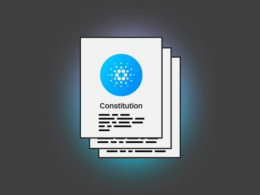The problem
What happened in 1971 was a turning point in the economic history of the world, which affected and continues to affect all the people of the world, to some degree, regardless of the language they speak and the country they live in. To fully understand what happened and appreciate the ripple effects it continues to have to this day, it’s important to know what happened previous to 1971 as well as what was happening in the world at this period of time.
Richard Nixon was president of the United States of America, Apollo 14 put the man on the moon for the third time, John Lenon launched “Imagine” the most famous song of the 20th century, Intel launched the first commercially available microprocessor and World Disney World opened in Florida. On a more sinister note, the Vietnam War had been raging for 16 years at this point and will continue to do so for another 4 years. This war was one of the main factors that contributed to the decision by the United States government to end the US dollar parity with gold or as it was called the Bretton Woods system.
The Bretton Woods system was put in place by the United States government and supported by its allies after the end of the Second World War. The conference took place in Mount Washington Hotel, in Bretton Woods where 730 delegates from 44 nations gathered to establish a new international monetary and financial order with the USA at the head for being the main victorious nation after the armed conflict that left Europe and their economy in ruins. The US dollar became the main currency for international trade as it was pegged at $35 the ounce of gold. This way the central banks from other nations could exchange their own currencies to the dollar in order to trade among themselves without having to worry about having the gold because they could exchange it at any time.
In the 19th and early 20th century, gold played an important part in international monetary transactions. It was used to back fiat currencies, their value was derived from their fixed relationship to the precious metal. But gold production was not even sufficient to meet the demands of growing international trade and investment. Supplementing the use of gold in this period was the British pound. Based on the dominant British economy, the pound became a reserve and transaction currency. But the pound was not up to the challenge of serving as the primary world currency, given the weakness of the British economy after the Second World War. The strength of the US economy, the fixed relationship of the dollar to gold, and the commitment of the US government to convert dollars into gold at that price made the dollar as good as gold. In fact, the dollar was even better than gold: it earned interest and it was easier to transact with.
That’s how we get to 1971, the US government can no longer sustain the parity between the dollar and gold. They have been printing more dollars and increasing the monetary base from 1944 to 1971 at a higher rate than gold was being mined from the earth. A negative balance of payments, growing public debt incurred by the Vietnam War and Great Society programs, and monetary inflation by the Federal Reserve caused the dollar to become increasingly overvalued. These generated an imbalance in the equation of the Bretton Woods agreement that started to generate stress in the system. President Nixon had no other alternative than to implement several economic policies known as the Nixon Shock, these included wage and price freezes, surcharges on imports, and the unilateral cancellation of the direct international convertibility of the United States dollar to gold.
Now, why is this so important? In the long history that humans have with the concept of money and the representation of value to exchange goods and services, the end of the Bretton Woods agreement marks a turning point in the world economy with ripple effects still felt today. As flawed as the system of pegging the dollar to gold at a fixed exchange rate of $35 an ounce, at least for some time, bank notes were backed by a finite real world commodity. The system ultimately failed because politicians kept printing more dollars than gold was being produced, to pay for the Vietnam War and social programs. Since the end of Bretton Woods, the US dollar became a fiat based system, meaning there’s nothing of value to support the issuance of new money other than the threat of the United States military power.
If the reader is not well versed in economic topics, they might ask themselves “how does this impact me?” Well, let me show you a couple of graphs from https://wtfhappenedin1971.com/ that easily demonstrates the negative impact a fiat based system has on the majority of the world population.
This graph shows productivity, meaning the output produced by firms, and hourly compensation of workers from 1948 to 2017. There’s a clear divergence from the moment the US dollar stopped being backed by gold and became a fiat currency without any real value behind it. Since the monetary base can be expanded at will, meaning politicians print more money, those who are furthest away from the printing machine, the workers, are the ones who paid the highest price. Productivity increases because technology advances which makes it possible to produce more at a lower cost, however because the value of fiat money decreases over time, those who rely on a wage to survive get the short straw. Meanwhile, those who have the opportunity and access to become shareholders of these firms get wealthier because they are part of the value creation process.

This is another graph to hammer the point home, real gross domestic product (GDP) and real wages, meaning adjusted by price changes. We can see that from 1947 to 1971, all these metrics were rising together. After fiat currency, we can see that real GDP per capita skyrocketed while the real median weekly earnings of full time workers adjusted by consumer price index (CPI) has been going sideways since. This means the country is producing more value but because workers are not participating as shareholders of this value creation only getting paid in fiat currency which devalues, rich people get richer and poor people get poorer.

This third graph shows why the baby boomers were able to buy a house in their late twenties/early thirties with a decent job wage and now millenials and gen z are destined to be renters for life. We have already seen that wages under a fiat currency system move sideways as the money they are paid loses purchasing power every minute of every day. Real estate, unlike fiat currency, does have a finite supply which means every year you need more of it to purchase a home because there’s more in circulation while new homes increase at a much lower rate.

Last graph I want to show you. These are all major currencies from the past century and their value in gold. We can see that it’s not only a problem with the US dollar, which is currently the main currency for international exchange. This is a problem that all currencies have because if we give politicians the power to create money out of thin air, its value relative to real world assets depreciates. Which makes the majority of the population poorer, while an elite of bureaucrats close to the creation of money, become richer at the expense of the majority.

The solution
Unfortunately, until January 9th 2009 we didn’t have an alternative to the fiat currency system which has destroyed the wealth of ordinary people around the world and concentrated it in the hands of the elites that run the system. Fortunately for us, the people of the world, Satoshi Nakamoto created a revolutionary technology called Blockchain and its first implementation by the name of Bitcoin.
Why is bitcoin so important and revolutionary? Because it takes away the power of money creation from the politicians and bureaucrats, which they have proven they can’t be trusted with this power. Imagine that the entire world adopted bitcoin as legal tender and unit of exchange, forget about fiat valuations it wouldn’t exist anymore. Every time a politician would want to do something, like building a road or a school or providing welfare to a particular group of people, they would need to have the citizenship support because the amount of bitcoin in circulation is fixed, there’s always going to be 21 million. They would no longer be able to wage indiscriminate wars around the world because to pay for it they would need bitcoin, which they can’t print out of thin air. In this hypothetical scenario all of the 21 million bitcoin have already been mined and in the hands of the people.
Perhaps it sounds too far fetched but we have already seen a country adopt bitcoin as legal tender. El Salvador adopted bitcoin in September 2021 and so far they have seen an increase of tourism, their government bonds have been the best-performing among bonds from emerging markets and the President Nayib Bukele has the highest approval rating in the region. Of course this decision to adopt bitcoin didn’t come without attacks and smears from the power centers that defend the supremacy of the US dollar as the currency of international exchange.
Since I was born and raised in Argentina, one of the countries with the highest inflation rate in the world, I was always curious to understand how money worked. That’s why I decided to study economics and learned about bitcoin early on in 2011. You may have seen the bitcoin meme of “fix money, fix the world” and it’s absolutely true. If you want to learn more about the situation in Argentina, I wrote an article titled Why Argentina should adopt Bitcoin and not dollarize. My country is an extreme case of what happens when politicians have complete control over the creation of money and how it can take a rich and prosperous country to the ruin. But there are many other countries, the majority in the developing world, that have the same problems and constraints due to the tyranny of the US dollar on their balance sheets.
If you are new to blockchain, bitcoin or cryptocurrencies it may sound crazy to say that bitcoin should be the unit of account and exchange of the entire world but as you start learning more about how the world and money actually works, and the effects it have on the well being and prosperity of every person in this earth, you will start to see this topic under a new light. Everything that we give for granted, every system and every framework of how the world operates was designed and built by people like you and me, and therefore it can be changed by people as well.
“I don’t believe we shall ever have a good money again before we take the thing out of the hands of government, that is, we can’t take it violently out of the hands of government, all we can do is by some sly roundabout way introduce something that they can’t stop.” – F.A. Hayek 1984










